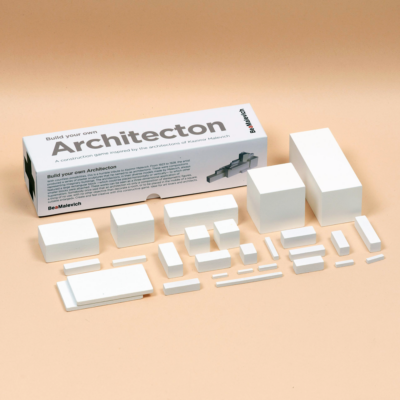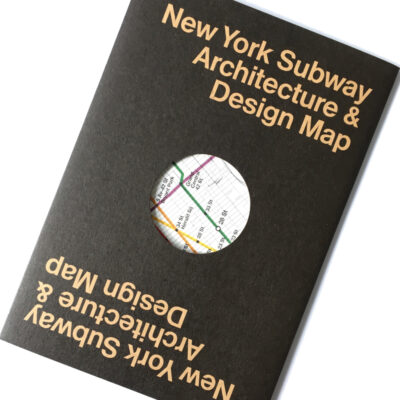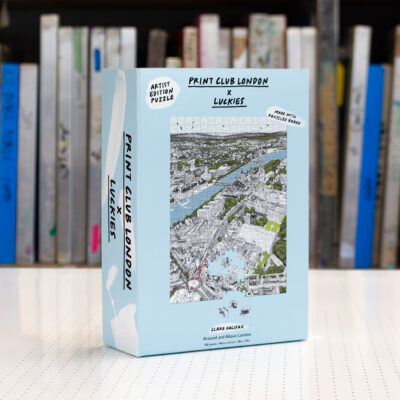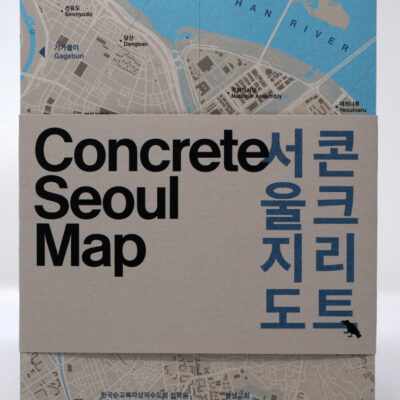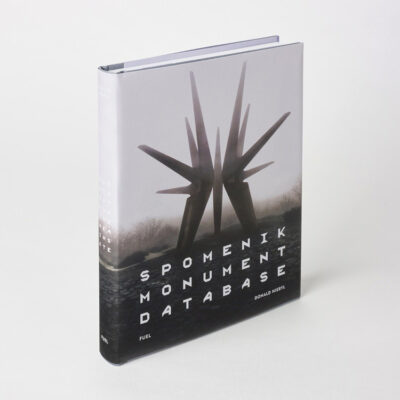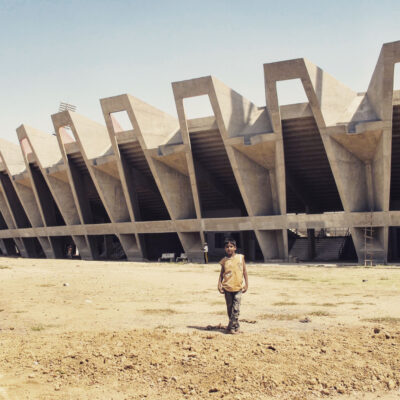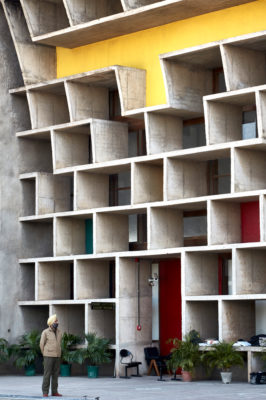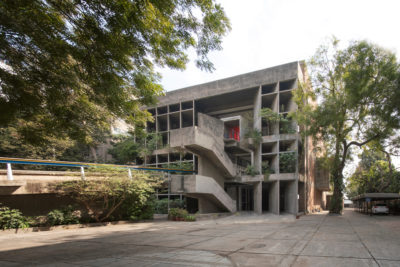Vertical City India
Nostalgia for the Future
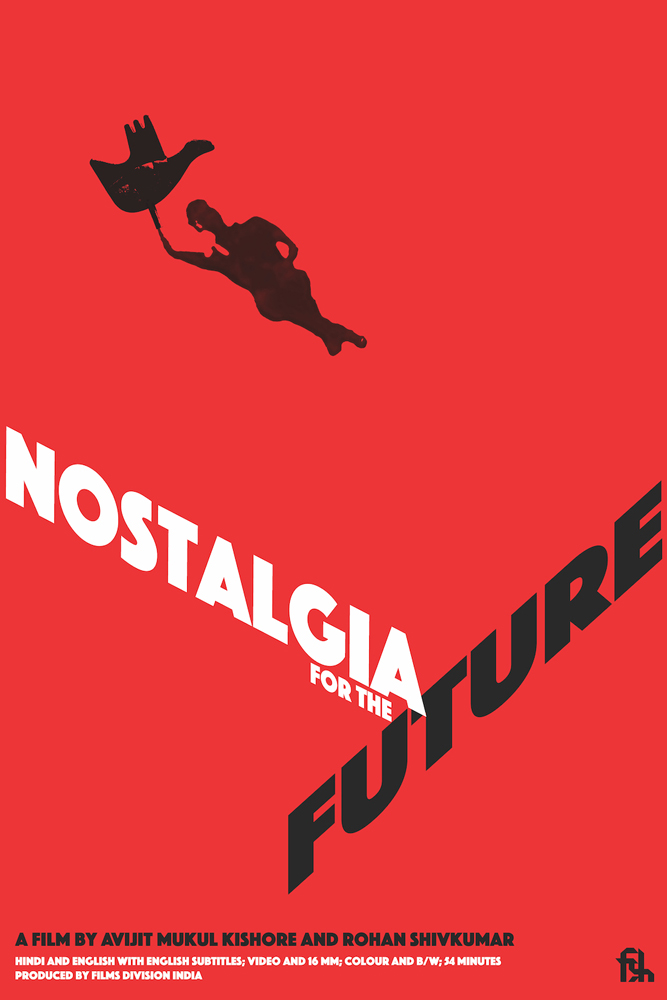
Indian Modernism has developed a distinctly inventive architectural language. And there is no better way to get an understanding of its story than to watch Rohan Shivkumar and Avijit Mukul’s Kishore films. Mumbai-based architect Rohan Shivkumar’s collaborations with film-maker and cinematographer Avijit Mukul Kishore make Indian Modernism understandable and accessible. Bringing together their two disciplines their documentary films enable the international audience to get an Indian perspective on Corbusier’s contribution to Indian architecture, a country in the aftermath of partition and independence going about the business of nation-building.
Nostalgia for the Future
Shivkumar and Mukul explain the movie is about ‘Indian Modernity, the making of the citizen and the architecture of the home’. Made in 2017, it focuses on four important buildings:
Le Corbusier’s Villa Shodhan in Ahmedabad
Sabarmati Ashram in Ahmedabad
Lakshmi Villa Palace built in the 19th Century in Baroda
A social housing project in Delhi built in the immediate aftermath of partition to house refugees and civil servants.
Using archival footage the filmmakers describe as ‘state propaganda films and mainstream cinema’ spliced with new colour film.
Lovely Villa
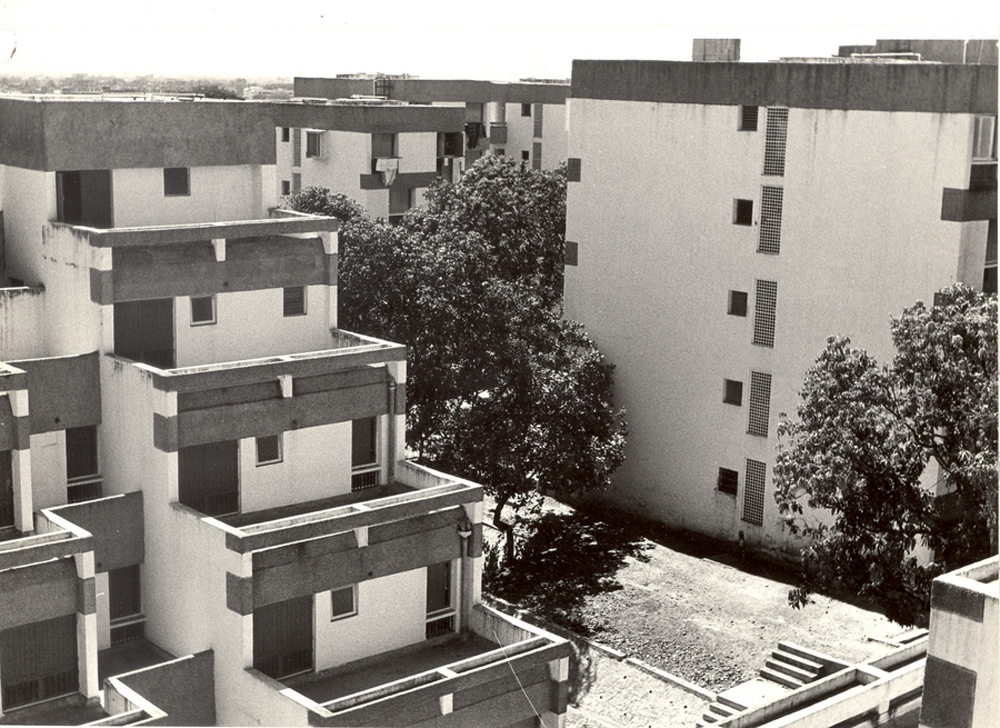
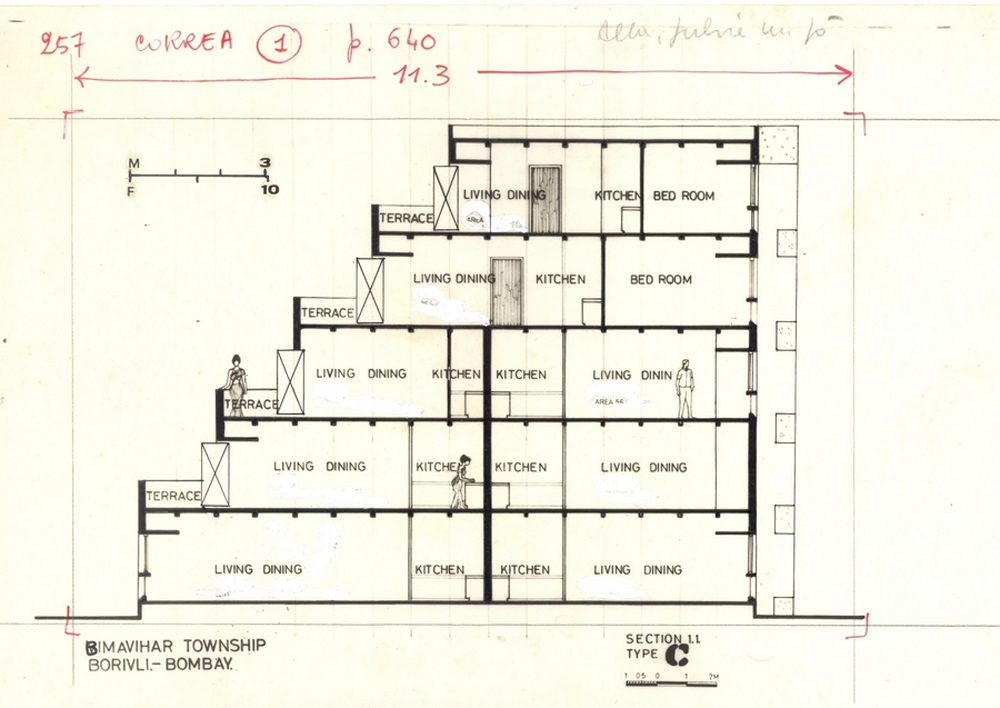
Images courtesy of Charles Correa Foundation
Vertical City
Certified Universal
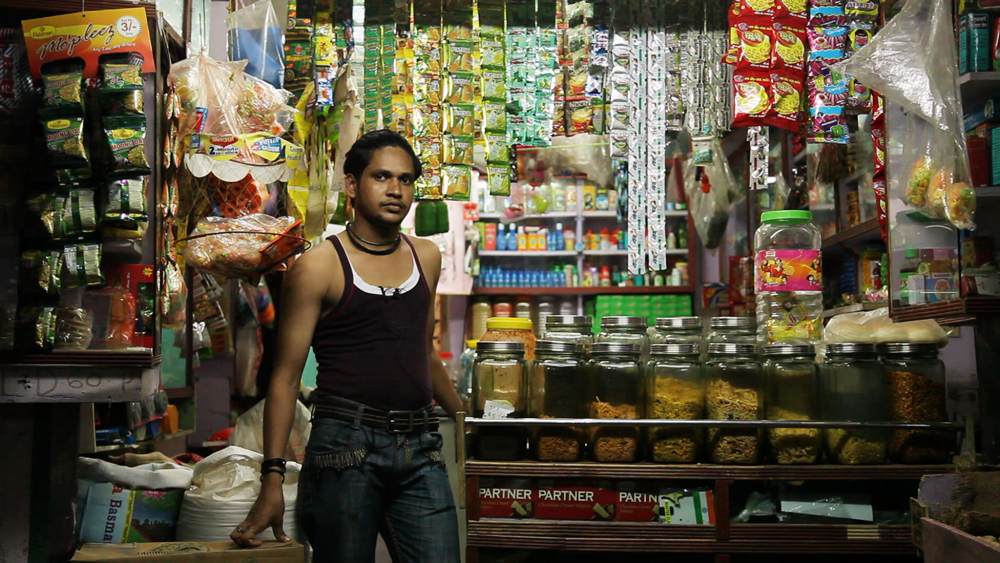
Vertical City, Mumbai
Greyscape recently had the pleasure of ‘zooming’ with Rohan and Avijit
Indian modernism played a role in the nation’s state-building after Independence; how would you describe that role. Is the Indian modernist legacy valued properly and are the buildings being cared for properly?
Architecture was enlisted in the early nation-building period as one of the important instruments through which India would claim its modernity. The building of new cities, factories, mass housing and the making of new institutional systems were all made tangible by adopting a Modernism for this context. Indian architects trained by the Masters of the Bauhaus, and those who had worked with Le Corbusier on the making of Chandigarh brought a modernist aesthetic to the language of the State. It was imagined that this language would help in uniting a notoriously varied nation- climatically, geographically, religiously and linguistically. Modernism was to become the language of democracy. As utopian as that urge was it cannot be denied that it also alienated people from the specifics of their culture and context. The much-vaunted efficiency that modernism was meant to create soon crumbled into mediocrity and bureaucratic ennui, and modernist architecture also came to represent everything that was wrong with the highly centralised state. After 30 years of the gradual and steady growth of the neoliberal economy, one can find within many realms a longing for many of the values systems that modernism represented. You see in this the nostalgia for music, advertising, television shows and architecture of that time. There is now a nascent movement to look at the modernist architecture of the nation as a heritage asset representing that particular period of history. However, because they represent a history that is also being rewritten many of these buildings are under threat of demolition. Most visible of this was the destruction of the Hall of Nations building in Delhi. There was a big furore among architects and the citizens of Delhi to protect it. However, the building could not be saved. But, in Chandigarh, the work of Le Corbusier has recently been added to the world heritage list and the city is now seeing a greater awareness of its modernist legacy.
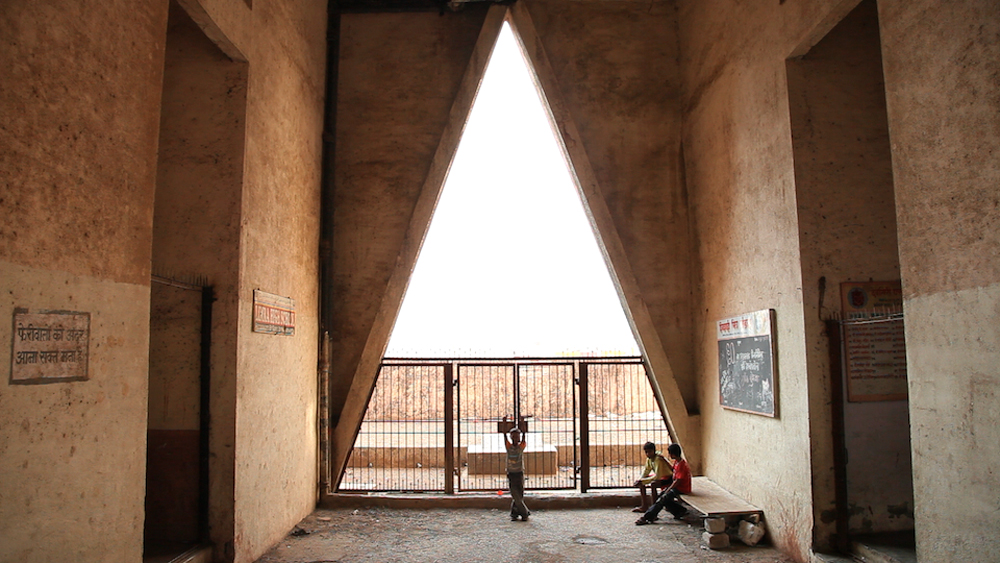
Vertical City
Tell us about your background, where you were born, where you went to school and what were your childhood ambitions? Rohan, were you always interested in a career in design and architecture? Mukul, was film always calling to you?
Rohan: I have always been a Bombay boy. Although I was born in Hyderabad, I grew up mainly in suburban Bombay- a suburb called Borivili in a colony designed by the great Indian architect Charles Correa. This colony was built by the state insurance company, the Life Insurance Corporation of India, as a way to provide investment opportunities as well as low-income housing for urban residents. In many ways it represented the kind of life that was imagined for the citizens of a socialist secular India. The housing was designed with ample open spaces for the children to run free, there were terraces for gardens, and mainly there was no income based hierarchy in the master plan. In fact a combination of different income groups was encouraged by mixing varying sizes of apartments within one building. While growing up these seemed natural for me. It was only when I discovered how segregated most other housing societies in the city were that I realised the anomaly that I was living in – a utopia as it were. I think it might be that kind of idyll – a spatial manifestation of the desires of the utopian imaginations that were at the heart of the making of the nation that fascinated me. Not so much its final form, but rather the desire for the making of a loving, fair future. The seduction was there- the chimera of the possibilities of a better world, and the desperate attempts that we make to get there, and architecture’s role in it. It was a terrific story.
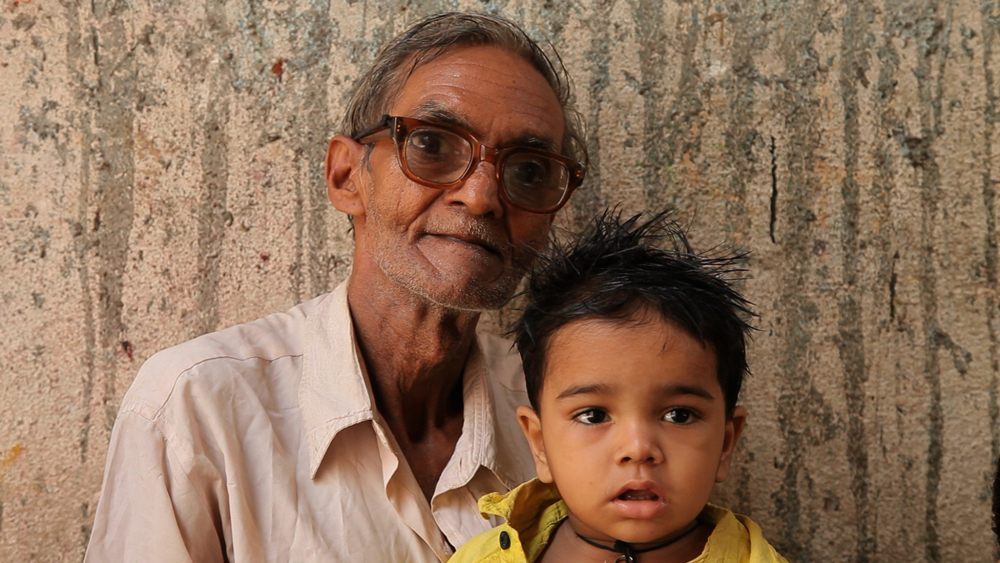
Vertical City
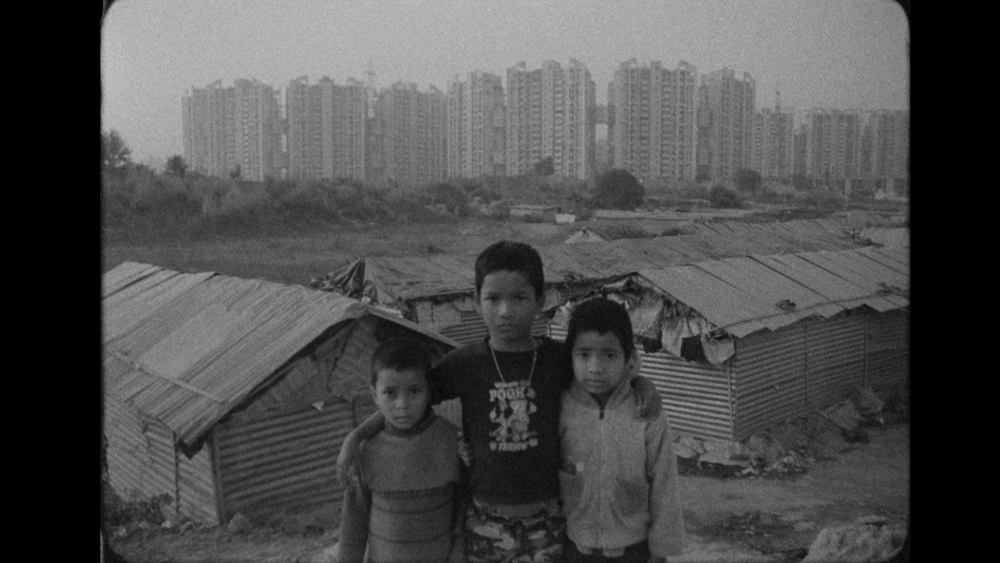
Nostalgia for the Future ‘shanties and high-end residences in Gurgaon
Mukul: I was born in Lucknow and grew up in Delhi. I spent most of my childhood in a housing colony built for refugees from Pakistan after independence. I grew up in a time that marked the tail end of what we refer to as the ‘nation-building’ years in Indian history when our national identity as a progressive, inclusive and secular welfare society was being shaped. Studying History in college further cemented this utopian ideology in me, even as Hindu fundamentalism was on the rise and India was undergoing tectonic shifts in the late 1980s and early 1990s. At this time, I was part of a theatre group, Music Theatre Workshop, that shaped the thinking of most of its members as thinking, questioning and slightly mad creative people, with eminent theatre person and educationist Feisal Alkazi leading us. Film was a calling to me fairly early. I wanted to make educational films when I was in college, to use film as a medium of instruction. I went to Film and Television Institute of India and studied cinematography. After 25 years of practice across various disciplines — fiction, documentary, television and visual art, I think my films have finally become that — ‘educational films’, as a commentary on culture, nationhood and identity.
Rohan, where did you go for your senior education?
Rohan: I did my architectural education in a school of architecture in Bombay from the late 80s to the mid-90s. This was period in which the country radically transformed. From a socialist economy we opened out the market. My school was one of the three architecture schools in the city 1989, but by the time I left, many more had opened up because of the privatisation of education. Ideologically my understanding of architecture straddled these two rather different imaginations.
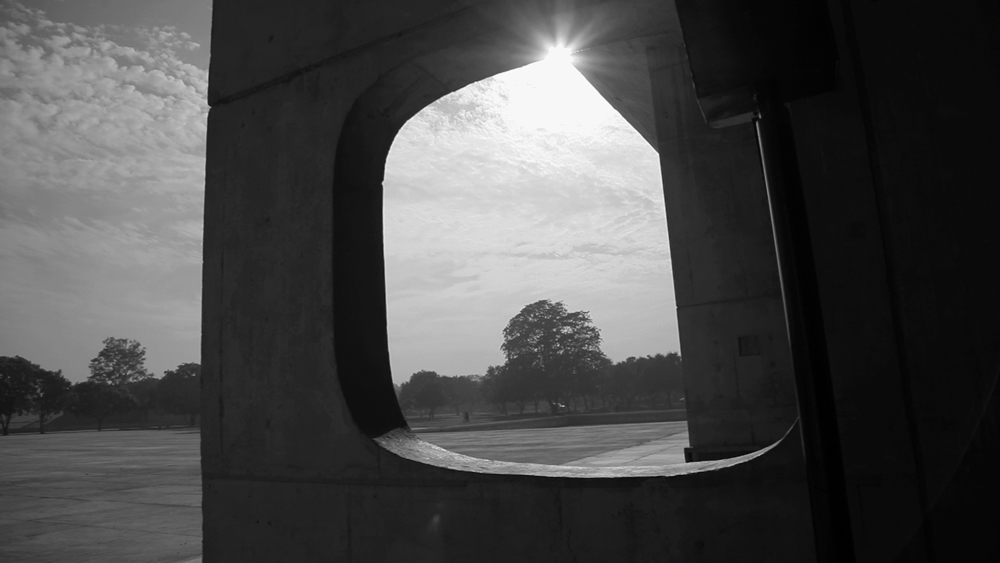
Nostalgia for the Future: Capitol Complex Chandigarh designed by Le Corbusier
How did you start in your careers?
Rohan: After my under graduation in India I went to the United States to do my Masters in Urban Design. The fascination for me with cities might have to do with the fact that cities seem to represent the best and the worst of society. They are great places which allow for people to write their own stories. The spaces make for rich encounters, conversations. My interest in cities was this – the way that they work as scaffolds upon which we make the best that we can of our lives. I felt that conventional imagination of what is a ‘good’ city needed to change. In a country like India, a good city for me was one that provided the infrastructure (formal or informal) for someone to explore new horizons of becoming. I got back from the United States in 1997 and started teaching almost immediately. I also started working with many governmental organisations, civil society organisations and urban research organisations that were, at that time, trying to find ways of intervening within the city for ‘improvements’. Some of these I found to be very problematic too – especially in the way that some of these civil society organisations used their financial and cultural capital to rid their neighbourhoods of what they considered to be ‘unsightly’. It was these contradictions to the idea of the democratic that I was struck by. I felt it was more and more important to start engaging with the world of ideas, to be able to clarify and articulate what it meant to participate in architectural and urban processes. What is the ‘good’ in good architecture? Or like I mentioned earlier- what is a ‘good’ city? At the school where I teach, we are interested in asking these fundamental questions from our unique position as being a school in Bombay? Being able to problematise the universalised aesthetics, logic and theoretical frameworks that underpinned much of architectural practice in the country. There is a research and consultancy wing in the school called that Design Cell that I was heading and through there we worked with slum communities, fishing communities, governmental organisation on projects for transportation, heritage, environmental issues, etc.
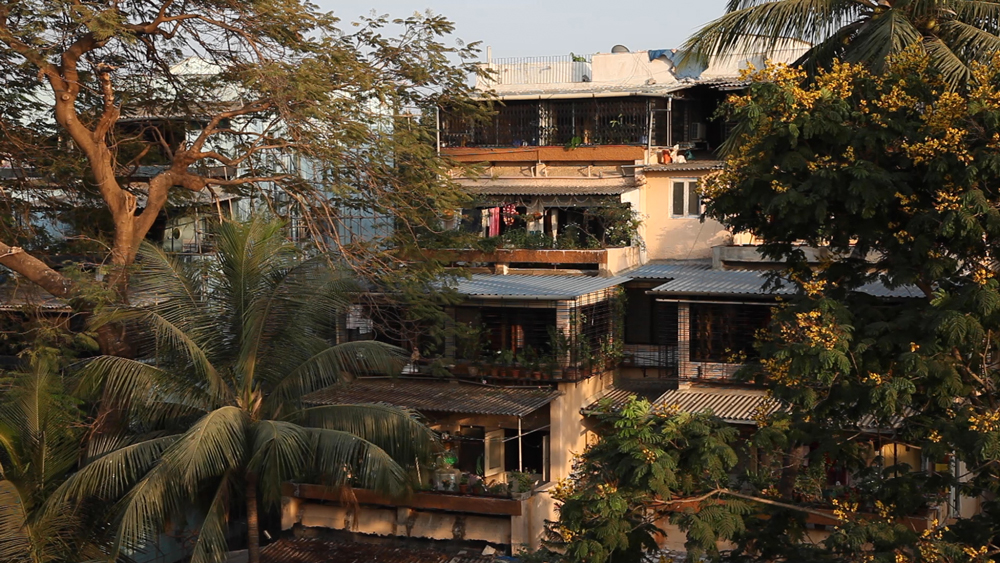
Lic Colony Mumbai
Mukul: I started as a broadcaster on State radio and television while in college. There was only State broadcast media then. After studying cinematography at film school I did assorted jobs assisting other cameramen (yes, it was a very gendered profession then but I am delighted that it is not so anymore) on advertising and television projects. I also started shooting documentaries for some filmmakers. I found myself drawn more towards dealing with real people through documentaries than the scripted realities of fiction film, though my training was entirely in fiction films. I also had a great learning on my own medium through working with eminent visual artists on video art projects that opened up my mind to the possibilities of the medium as well as the strictures of the feature film industry. I did shoot a fiction feature film but was simultaneously working on my first film as director – Snapshots from a Family Album. So, the first seven or eight years of my practice shaped my profession as someone who shot, directed and worked in inter-disciplinary projects on a variety of media from celluloid film to digital video.
When did you meet?
Rohan: Mukul and I have been friends and collaborators for two decades. We have many common friends and interests in the art and culture circuit of the city.
Who were/are your role models? Did either of you have mentors?
Rohan: I don’t think I can point to any particular person as a mentor, honestly. In terms of role models there have been many people I have admired for the ways in which they have led their lives and the work that they have done. None of them are conventional ‘role models’ in the sense that I model the role that I play in the world on them, but there are certain aspects of each of those that I find admirable and do wish I could have some of those personality traits, whether those are their passion, their freedom, their warmth or their generosity. These people come from all kinds of fields, pop stars, politicians, architects. From each I find a part to admire, maybe emulate consciously or unselfconsciously.
Mukul – The list of role models becomes longer with time. For me, these need not be from film alone. To name a few; SNS Sastry, documentary and experimental filmmaker; JS Bach, for his ability to marry supreme complexity with sublime beauty in deceptive simplicity; Andrei Tarkovsky, filmmaker; Vanraj Bhatia, composer; Derek Jarman, filmmaker, for beauty and love; Charles Correa, architect and Nilima Sheikh, painter. My mentor would have to be Feisal Alkazi, theatre-person and educator.
What do each of you think brings you together? Is it right to say that you are both deeply interested in pedagogy?
Rohan: I am interested in the world of ideas. I also do believe in architecture as the place through which people write their own stories. It is an enabler for narratives. These narratives tell stories of citizenship, family, love and loss. I think it may be this that might be why I am also deeply interested in Cinema. Architecture and Cinema both seem to present to us images – architectural drawings, moving pictures on a screen. They seem to be like mirrors into which we enter to write our own stories. They seem to capture what it means to be human, the desires and the desperations. I think that may be the place where Mukul and I find our common interest. In the role of the image and its relationship with the world.
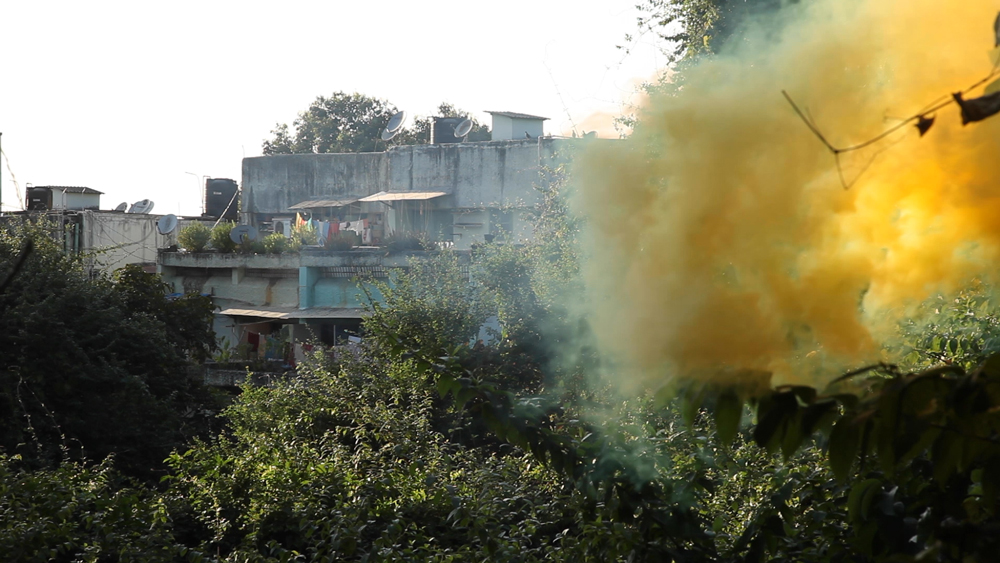
Lovely Villa Architecture as Autobiography
Mukul: I agree with Rohan and will add a desire to look at films through the frameworks of our respective disciplines and their specificities.
Tell us about your work together, how you decide on a project, how you divide the work? Assuming there are disagreements how are they settled?
Rohan: Mukul and I have been collaborating intermittently for a long time. It is only in some of his later works that were explicitly about architecture or the city that I was more actively involved. For the earlier films I was more of an audience, it was later that I started becoming more excited about the possibilities of film as a medium of exploration. As someone who recognises the importance of disciplinary training I trust Mukul largely with the decisions concerning the film-making itself. I am more involved in the conceptualisation and scripting process. I do suggest ideas for larger structural issues and some visual references but trust Mukul on making final calls. As far as disagreements are concerned, they do not usually occur as we both know what we can contribute. I might have some ideas that may sound right on paper that don’t work visually at all and, on the other hand, there may be certain ideas that need to be articulated because they are important for the film and we have to find ways of making them a part of it.
Mukul: We have been part of several projects together, even outside of our film work. In addition to what Rohan said [above], there are occasions when films have to evolve over time and you have to invent them as you observe them. It is an exciting though unnerving process. But I have a stage personality. It switches on under the spotlight, as if in performance, even while making a documentary. The brain begins to function differently with a camera in your hands in a live situation. Then you draw from your life’s learnings and experience to respond to it and consciously construct your film as you watch things unfold before you.
Are you still friends:)
Rohan and Mukul: Yes.
Your work has received a lot of critical acclaim; has that helped other projects?
Rohan: I think that Nostalgia for the Future do as well as it did was a pleasant surprise for us. We discovered that in spite of the film’s rather specific issues and abstract structure, it was able to elicit responses from a variety of different kinds of people around the world. This was very heartening to know.
Mukul: The response to Nostalgia for the Future has indeed been very affirming. It also validates my firm belief that the audience is very sensitive towards and receives the most complex of works, with a great deal of eagerness. Unfortunately, the majority of production and distribution systems annoyingly insist on over-simplifying films, especially documentary, dumbing them down. It is my attempt to make films in a way that I never get tired of my own work and find newer meanings in it each time I view it. That requires a certain density and emotional resonance in the work.
Do you have more projects in the pipeline? Can you tell us something about them?
Rohan and Mukul: We do have a new project that we have started work on. It is interested in the relationship between ritual and space. We are exploring the making of sacred domains and the performance of the body through festivals North and North East India.
What are your favourite Indian buildings?
Rohan and Mukul: There are too many to list here if one looks at the incredible history of the country- from the ancient Buddhist Cave Temples in Ajanta, to the temples at Khajuraho, the Mughal capital of Fatehpur Sikri and colonial buildings like the Victorian Gothic Ensemble in Bombay. In the modern era Charles Correa’s work has been exceptional in the way he has attempted to evolve unique solutions to questions concerning housing, public spaces and institutions. These include his low-income housing schemes like the Artists Village, Kanchenjunga apartment building, Bharat Bhavan, Bhopal and IUCAA, Pune.
Quick fire questions:
-
- Favourite movies –
- Rohan: Am eclectic and omnivorous when it comes to films and music. My tastes range from Marvel superhero films and Bollywood blockbusters to Arthouse classics and experimental film.
- Mukul: Derek Jarman’s The Garden, Jean Genet’s Un Chant d’Amour, Satyajit Ray’s Nayak, SNS Sastry’s This Bit of That India, Bergman’s five hour version of Fanny and Alexander.
- Favourite music
- Rohan: Almost everything on shuffle – pop, rock hindi film music, world music, western and Indian classical.
- Mukul: Bach, Glenn Gould, Poulenc, Hindi film music.
- What do you do to relax?
- Rohan: Watch at least one movie a day and listen to music constantly. And make sure I index them on my List.
- Mukul: Watch movies, doomscroll on social media, have long text conversations.
- Favourite books –
- Rohan: Oscar Wilde, Tennessee Williams, and histories.
- Mukul: I’m mildly dyslexic, so it is hard for me and my reading is slow! But — Amitav Ghosh, Oscar Wilde, film criticism.
Catch those films
Hindi, English and Marathi (with subtitles), HD video, Colour and B/W, 15 min, 2009
Hindi and English (with subtitles), HD video, Colour and B/W, 34 min, 2010
About the Directors
Avijit Mukul Kishore is a filmmaker and cinematographer based in Mumbai, working in documentary and inter-disciplinary moving-image practices. He is involved in cinema pedagogy as a lecturer, and curates film programmes for prominent national cultural institutions. His films as director include Snapshots from a Family Album, Vertical City, To Let the World In, Electric Shadows and Nostalgia for the Future, and as cinematographer: Kumar Talkies, Kali Salwaar, John and Jane, Seven Islands and a Metro, Bidesia in Bambai, I am Micro and An Old Dog’s Diary’.
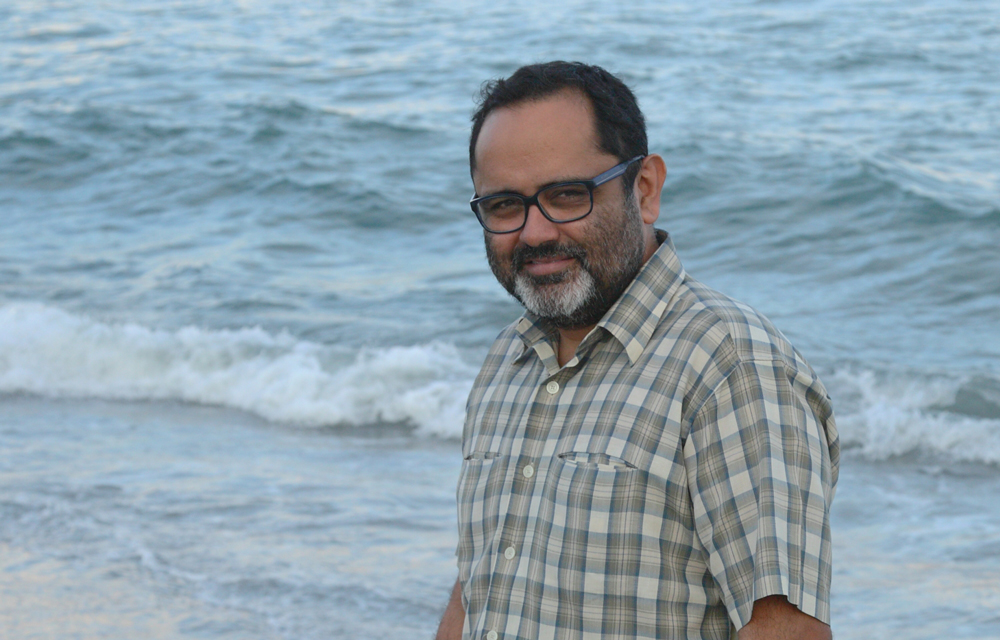
Avijit Mukul Kishore
Rohan Shivkumar is an architect and an urban designer practicing in Mumbai. He is the Dean of Research and Academic Development at the Kamla Raheja Vidyanidhi Institute for Architecture and Environmental Studies. His work spans architectural and interior design, to urban research and consultancy on issues concerning housing, public space and sanitation. He is interested in exploring the many ways of reading and representing the city, and is co-editor of the publication on a research and art collaboration – Project Cinema City. He also curates film programmes and writes for Anarchytect (blog) on cinema and urban issues. He is working on a book discussing approaches to the design of homes among Indian architectural practices’.
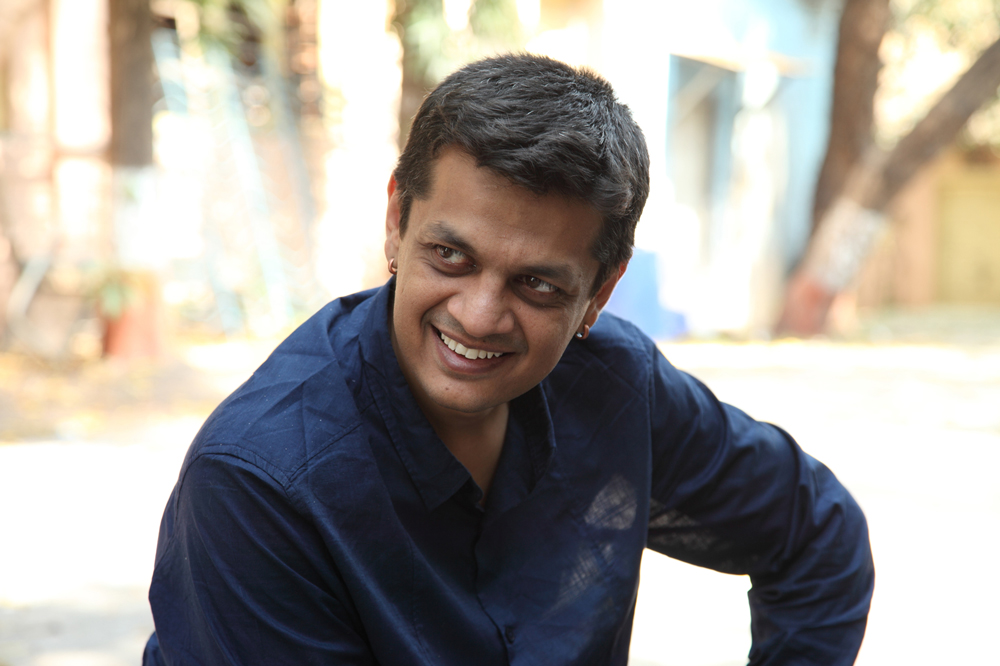
Rohan Shivkuma




